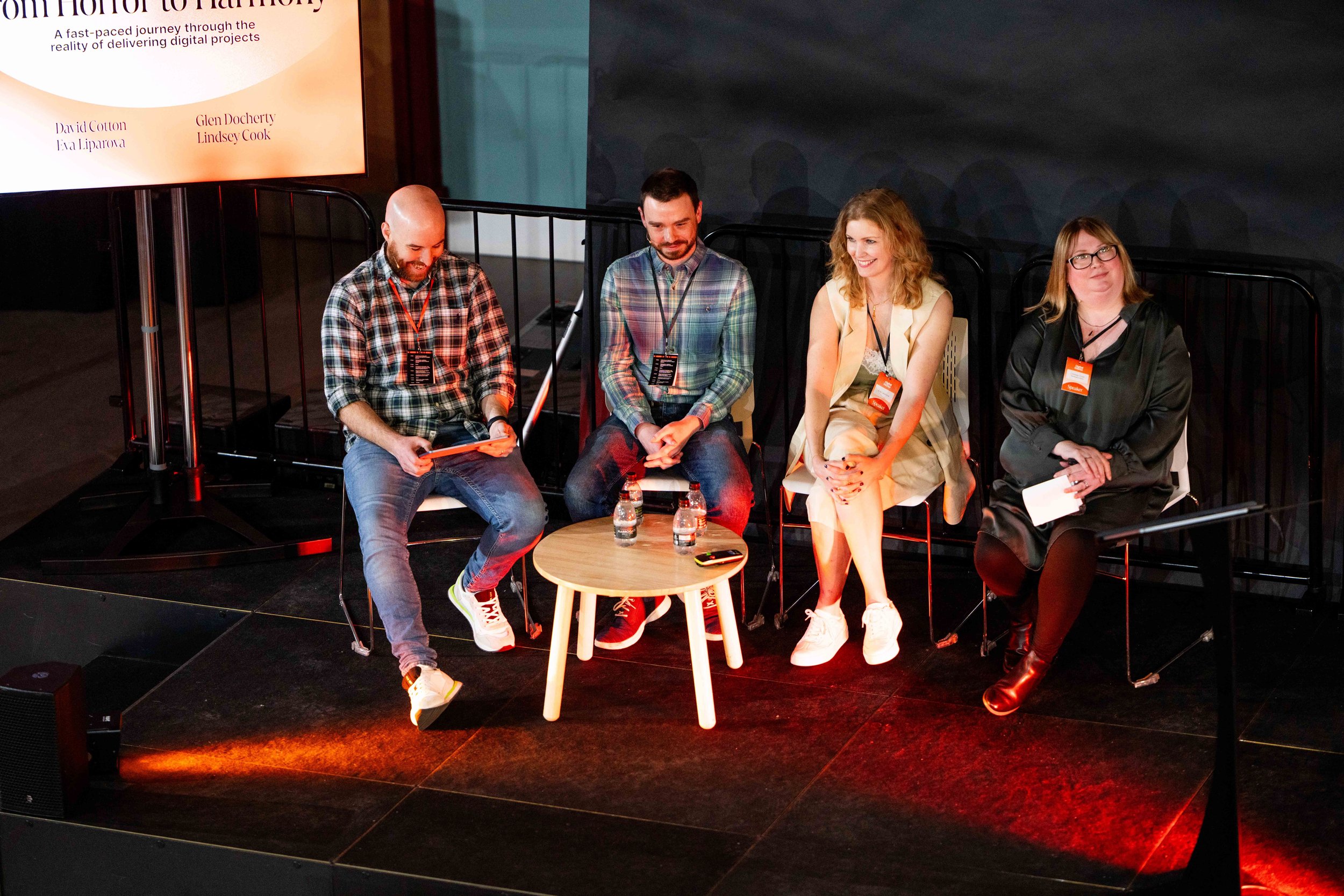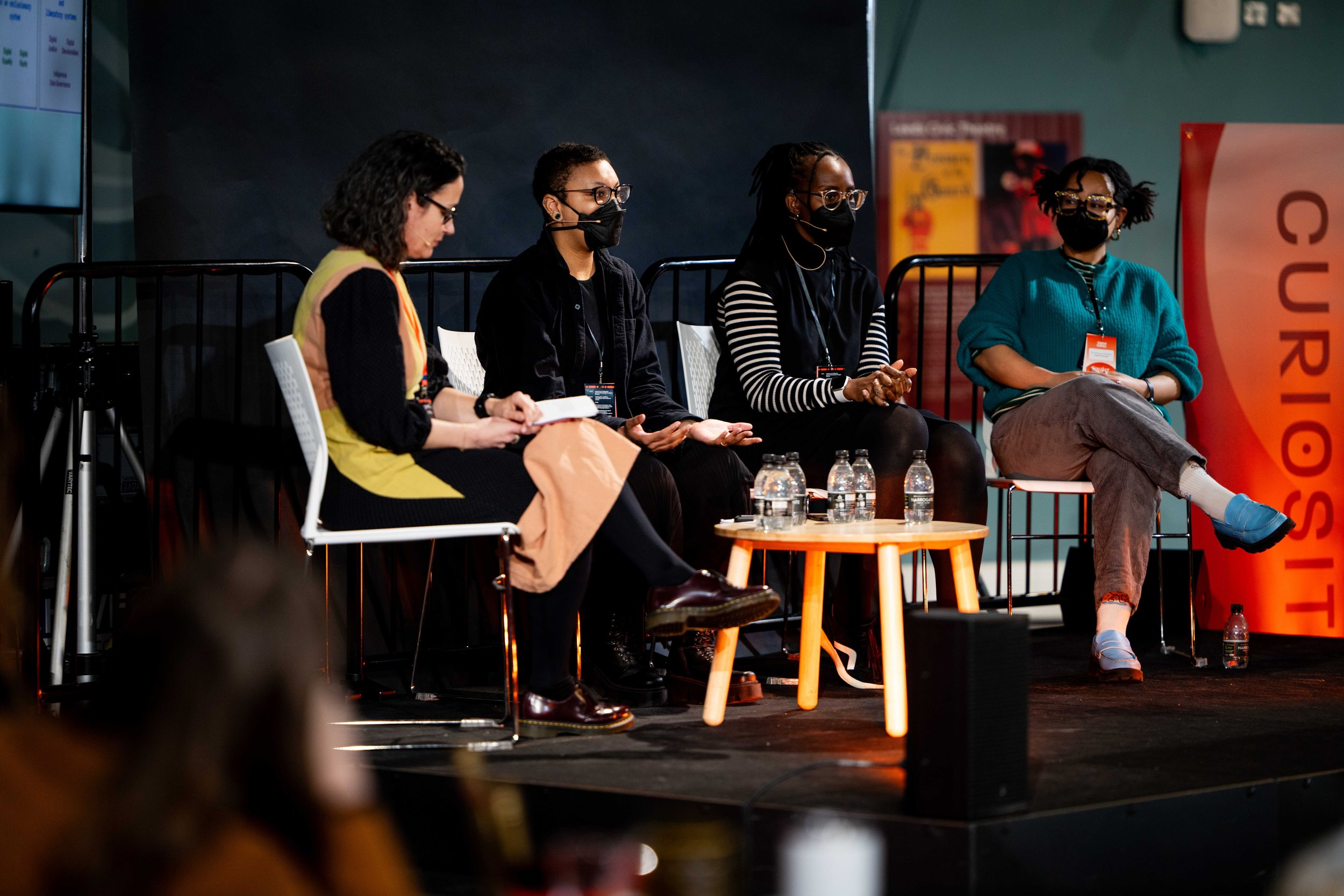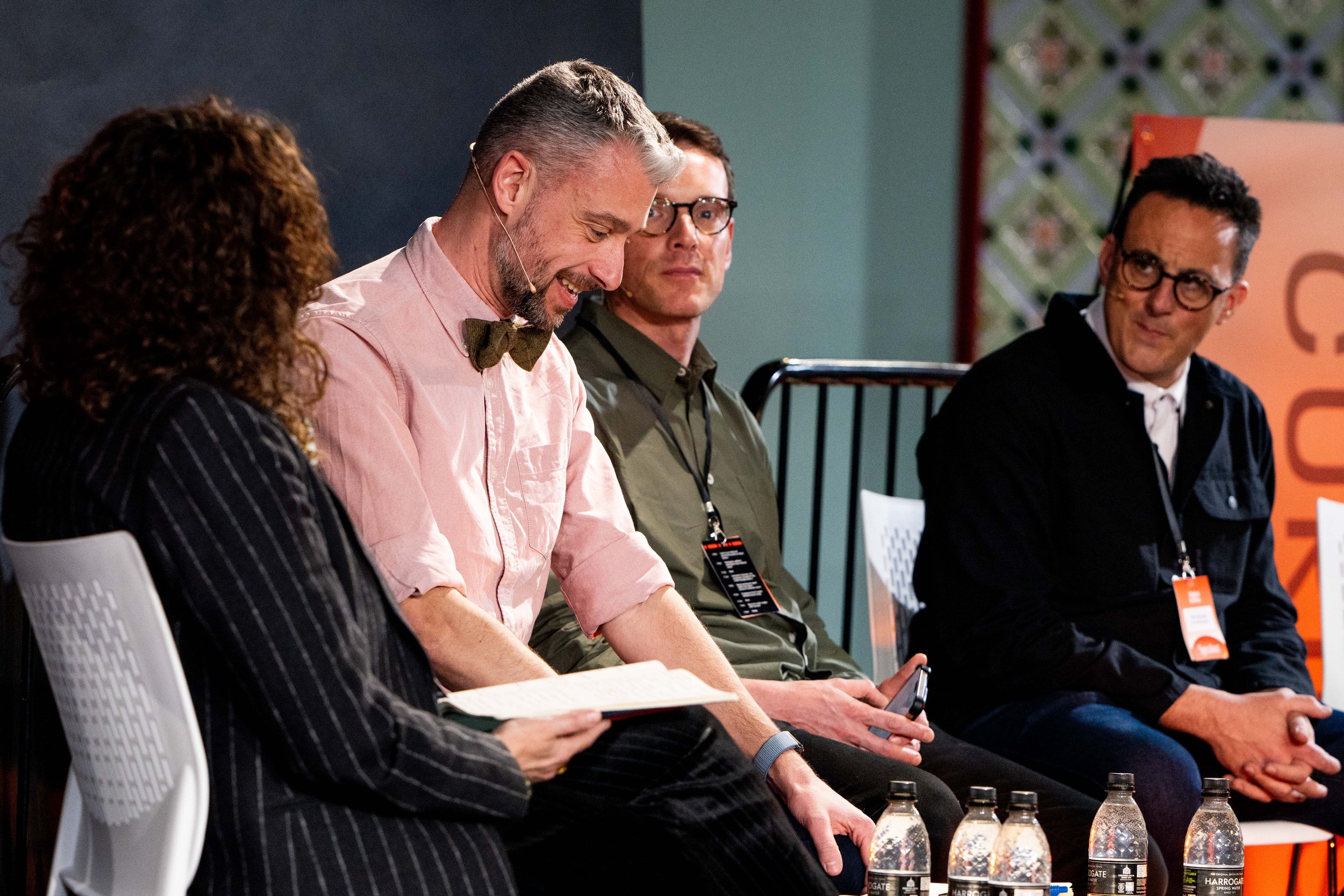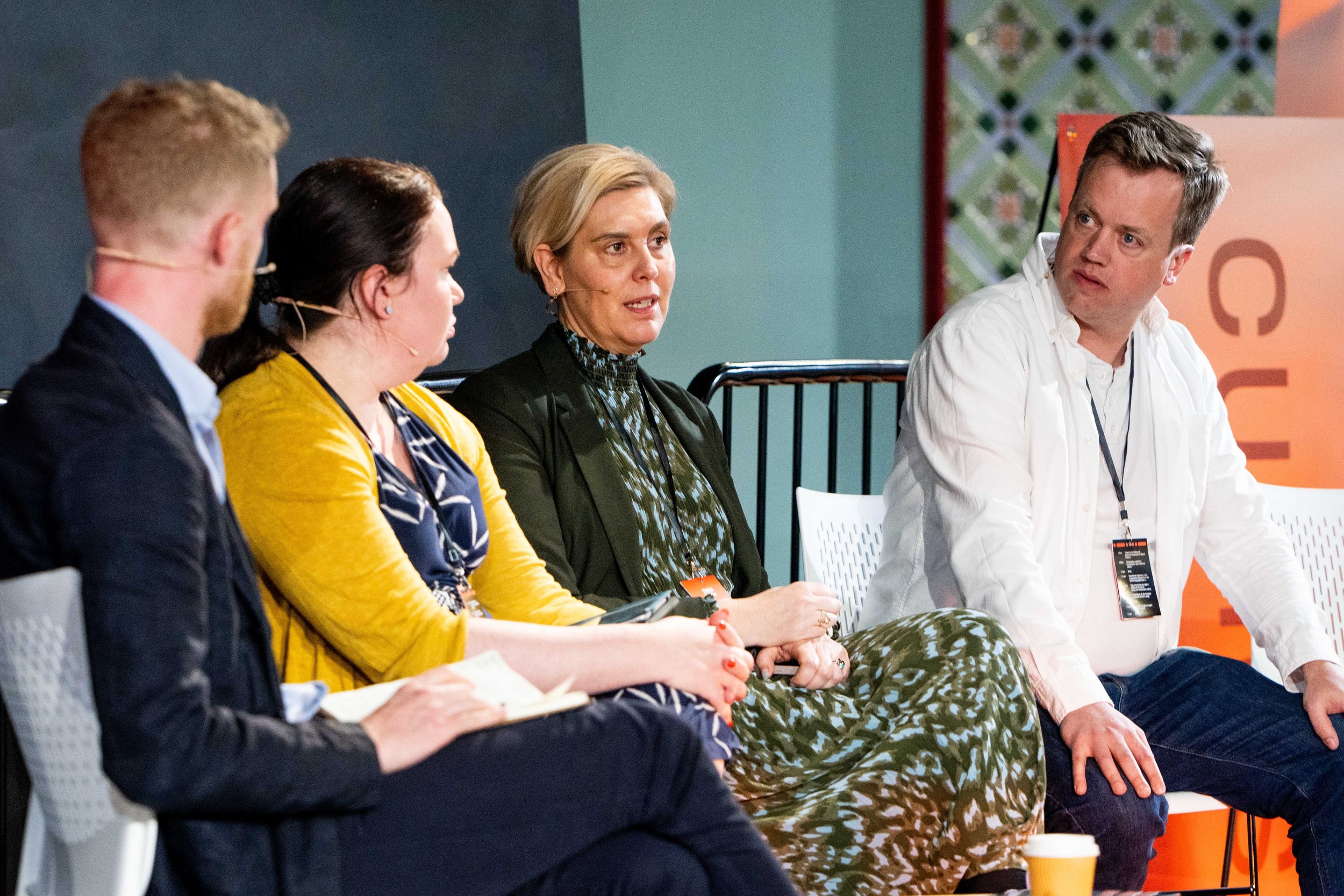It was a total joy to speak at the Digital Works conference on 24th-25th April, in Leeds about how to shift mindsets when building digital products.
Though you might be familiar with the Digital Works Podcast series, this was the first ever conference gathering. Organised by Ash Mann and substrakt, it was fantastic to finally be part of a conference dedicated to all things digital in the cultural sector.
If you’ve missed it, you can now get your digital catch-up tickets.
“From horror to harmony” was a panel session made up of 3x Pecha Kucha presentations about how to deliver digital projects well and efficiently. It was an honour to share the stage with Lyndsey Cook, Director of Comms at Garsington Opera, David Cotton, Web Developer at Henry Moore Foundation and Glen Docherty of substrakt.
But there was SO much more to the 2-day conference that I found useful as a product leader – in fact, I’ve had to split this post into 2 separate posts.
So if you’re a product person in a cultural organisation, here’s 5 tips and takeaways from Digital Works that you might find useful – part 1. Photos by Thom Bartley.
1) Ask the right questions before you pick the technology
Kati Price, Head of Experience and Digital at the V&A, framed her 10 years of digital at the V&A around these 3 open questions:
“How might we tell stories that cross institutional boundaries?”
“How might we make our institutions, knowledge and collections relevant to younger audiences?”
“How might we immerse audiences in other worlds?”
With these, it’s worth sharing:
IIIF (international image interoperability framework) technology, which enables the museum to tell virtual, image-led stories from objects pulled from multiple sources.
Kati shared this virtual reconstruction of the Teutonic Knights Bible with half of the bible being in the V&A collection and the other in the British Library – although the recent British Library cyber-attack has meant the BL images are currently unavailable.Takeaways:
Define the story to be told, with whom, why and why now?
Join technology communities to advance your thinking
Start with small, contained tests with your users
mused, a content-rich, quiz-fuelled site designed for global Gen Alpha audiences.
Takeaways:Find audiences where they’re already consuming content
Engage with them on their own terms and with the existing habits
Package the content in ways that responds to their interests
I was lucky to have product managed mused – read more about how we’ve done the above in this post or get in touch, happy to share more learnings.
Use of VR in the V&A’s Alice: Curiouser and Curiouser exhibition, which fully embraced the challenge around creating something meaningful that could only be done in virtual reality.
Takeaways:Make it a meaningful experience and prioritise the player
Use experience mapping to create a step-by-step visualisation of it
Understand the affordances and limitations of the technology
Playing with scale, perspective and making the player the main protagonist of the experience are all excellent affordances of VR.
This is something I talked about in my post “Design choices to encourage and avoid when telling a story in VR” when I worked on Current, Rising, the world’s first opera in hyper-reality at the Royal Opera House.
2) Align your organisation prior to digital transformation
Aled John, Deputy Managing Director at FT Strategies shared how the Financial Times shifted from advertising in printed newspaper as their core business to becoming a multi-platform digital-first organisation of over 1 million subscribers, with FT Strategies spinning out of the process as a separate consultancy arm of the business.
From embedding data insights into each team to enable cross-functional collaboration and agency, through to explaining how they created new user habits and engagement drivers, Aled shared how above anything else, you must align your organisation before embarking on a digital transformation.
Takeaways worth sharing:
Establish a north star goal, agree what success looks like in 6, 12 and 36 months and draw up (and share) a project charter
Choose the customer you can rely on for the future and build direct relationships with them – own the data
Break down the transformation into phases
Enable your teams – give them insights, agency and influence
Establish that great journalist (like arts!) matters – and is worth paying for
3) Get organised around what you’re innovating in
The panel discussion around all things “funding re-imagined” was packed with so many useful tips to re-think business models, in what is a very difficult funding landscape for many cultural organisations today.
With Hilary Knight, Senior Consultant at AEA Consulting, Seva Phillips, Head of Arts & Culture Funding at NESTA, and Helen Page, former Chief Brand Officer of Virgin Money.
Brilliantly chaired by Maxine Mackie of Label Ventures, the panel shared just how crucial it is to move from grant-based to investment-based thinking. In the face of corporate giving falling off the cliff, they urged cultural organisations to find meaningful, purpose-based partnerships and genuine value exchange across sectors.
The success stories of NESTA’s Arts Impact Fund were particularly inspiring – for example, Soho Theatre, who got a loan to produce 12 episodes of standup comedy, to then sell them to existing broadcasters and platforms. Spoiler alert: the loan has already been repaid.
Takeaways worth sharing:
Consider your assets – what can you do with the space in your building(s)?
Look beyond the walls and consider your “assets as knowledge”, such as art, stories, objects, artefacts – what unique stories can you tell? How can you own and licence the IP around this?
Consider “mash-ups” – what collaborations can you create with other organisations, where’s a meaningful value exchange, across sectors? Consider missing skills you might need too – what can you take from other organisations that’s not cash?
Be prepared for your organisation to change – you must have a learning mindset
Differentiate between invention and innovation – what’s what? Get organised and aligned around what you’re innovating in
4) Question the ethics in AI – and get involved
In light of AI discussions popping up everywhere you look, “Navigating digital power” was a though-provoking panel discussion that urged us to question the provenance of datasets in AI and machine-learning, and to work together to proactively regulate the digital space.
With Dr Francesca Sobande of Cardiff University, Dominique Barron of Careful Industries, and temi lasade-anderson, PhD candidate at King’s College and Fellow at the Centre of Advanced Internet Studies.
How exactly are we employing these tools in our organisations, and how do we know the values of our business aren’t being thrown into question in the process?
How do we make sure we’re not excluding people – given that AI is trained on datasets that already reflect those that are marginalised in our societies, systems and policies? Data capture ethics is so often picked up only once an organisation has to deal with an issue – but how do we avoid that in the first place?
And who owns the rules?
Takeaways worth sharing:
Be clear about the problem you are trying to solve – is AI the answer?
Question the provenance of the datasets the tools you’re using have been trained on – and be vocal about it
Get your legal teams involved early to check for trademark or copyright issues in how AI might use your datasets
Ensure you have measures in place to check if and how you are excluding people – for example if using AI in a hiring process
Find existing projects that that out there, run by people, to combat issues around biases and ethics in AI – who can do with more resource and visibility from you, and how can you and your cultural organisation move the conversation along?
5) Be niche, authentic and purpose-driven
The National Theatre, The Tank Museum and LEGO walk into a bar… It’s not often you’d find these 3 companies on the same stage, but at Digital Works, Alex Bayley, Chief Marketing Officer at the NT, Nik Wyness of the Tank Museum and Alex Ayling of the LEGO Group had a fascinating discussion about the power of digital audiences.
So what kind of content does create brand affinity, loyalty and ultimately opens up new income streams? They agreed it’s often driven by intense love and interest in specific content (like tanks).
Testament to this is the Tank Museum’s following of over 750,000 subscribers on their YouTube channel, which now drives 30% of their total turnover.
Takeaways worth sharing:
Be clear about your purpose
Be niche and authentic – what are the stories only you can tell? As Alex Ayling said “trying to please everyone is the worst thing on the internet”
Experiment and iterate – can you put out small weekly tests (like a video on YouTube) to learn from?
Consider the kind of people you can reach who are never going to visit you in person – who are they, what are they interested in, and how can you fill that gap?
Consider looking after your fans in the same way you look after your members – it’s labour-intensive but worth it
There’s so much more to mention, but I’ll just sum these up:
An inspiring panel chaired by Annette Mees of Audience Labs shared examples of the creative potential of digital. Featuring Marshmallow Laser Feast, Sam King, Head of Programme at HTC VIVE Arts and others, it is well worth a watch.
Approaches to data collection and actioning insights by a panel from Audience Agency, Royal Opera House (since then rebranded to Royal Ballet and Opera) and People’s History Museum was another highlight.
Seb Chan, Director of Melbourne’s ACMI was an excellent closing keynote about the need of digital imagination in leadership.
It was brilliant to meet and connect with so many of you in Leeds – look forward to staying in touch, and let there be more in-person gatherings like these!
And if you’ve missed Digital Works, get your digital pass tickets and find the full schedule here.
